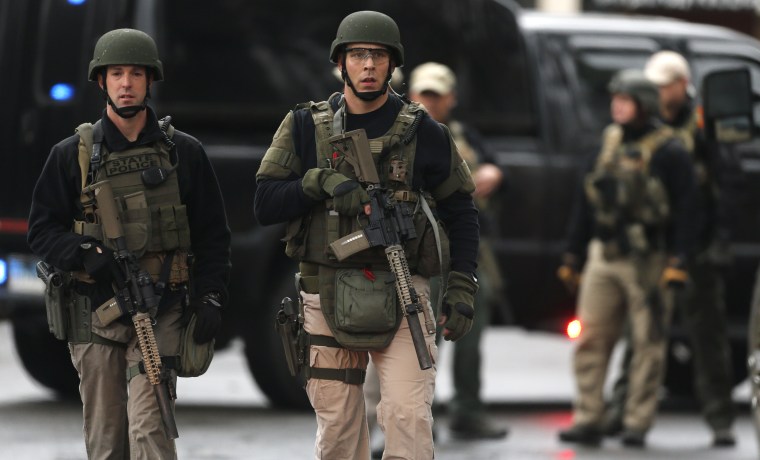Attorney General Eric Holder warned a gathering of police chiefs from across the country that “active shooter” incidents rose dramatically in the last few years and called for better equipment and training for officers on the frontlines.
Holder, in Philadelphia on Monday for the annual International Association of Chiefs of Police conference, said the United States saw an average of five active shooting incidents a year between 2000 and 2008. The annual average of such incidents has tripled since then, he added.
The Department of Homeland Security defines an active shooter as someone engaged in killing or attempting to kill people in a confined or populated area.
"We've seen at least 12 active shooter situations so far in 2013," Holder said, adding that over the past four years the total number of people shot and killed in these kinds of shootings is up nearly 150%.
A number of recent mass shootings have brought gun violence and gun control to the forefront of a broader national dialogue on America and its love of guns. Just last month, Aaron Alexis, a delusional Navy contractor opened fire on workers at the Washington Navy Yard, killing 12 people before being shot and killed by police.
"It's become clear that new strategies and aggressive national response protocols must be employed to stop shooters in their tracks," Holder said.
President Obama called on the nation to engage in soul-searching after the Navy Yard shooting, saying that “we can’t accept this” and that he fears that tragedy “is somehow the new normal.”
He called for tougher gun control measures and urged lawmakers to take on the tough political work necessary to break partisan gridlock in Washington around the gun issue.
After the Sandy Hook school massacre and a number of other high-profile shootings, the Obama administration and the Democrats successfully drummed up public support for gun control, but the efforts waned as Republicans and gun groups like the NRA pushed back and the country became enmeshed in the muck of other issues including the budget and health care concerns.
Sen. Majority Leader Harry Reid, a Democrat from Nevada, has said that he would reintroduce a package of gun bills narrowly defeated last spring no sooner than 2014 ahead of the midterm elections. The gun lobby and conservatives successfully stymied measures that would have made required background checks on all gun purchases and limited high-capacity magazines. Though the measures were defeated, support for universal background checks among voters remains extraordinarily high.
Meanwhile, Holder’s comments during the IACP conference suggest a broadening of focus in the fight against mass-casualty gun violence that adds law enforcement training to the mix of legislative and social changes called for earlier by the president and myriad gun control groups.
Holder said that over the past decade the DOJ has helped train 50,000 frontline officers, more than 7,000 on-scene commanders and over 3,000 local, state, and federal agency heads on how to respond to active shooters.
As the number of mass shootings has risen, police have grown increasingly aggressive in responding to such incidents. Instead of remaining passive and waiting for backup during active shooter situations, which for decades was the conventional response, departments now train officers to engage active shooters.
Experts in police tactics have described the shift as a “sea change” brought on by the massacres at Columbine High School in 1999 and at Virginia Tech University in 2007.
“We used to sit outside and set up a perimeter and wait for the SWAT team to get there,” Michael Dirden, an executive assistant chief of the Houston Police Department, told the New York Times earlier this year.
“Now it’s a recognition that time is of the essence and those initial responders have to go in,” he said, adding that his officers are being trained to first move in on their own when they encounter active gunfire.
Holder, in his remarks on Monday, said responding police officers should be provided with everything they need to combat the heightened threat of mass-shooters.
"That's why all law enforcement officers must have the best equipment and most up-to-date training to confront these situations,” Holder said. “We owe these officers nothing less.”
